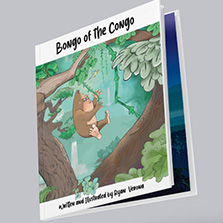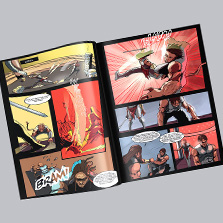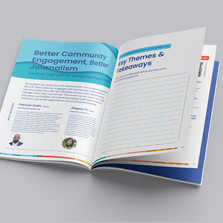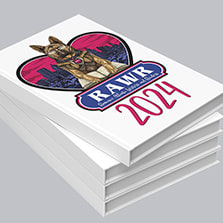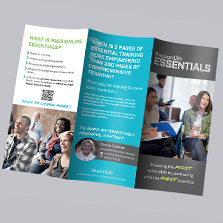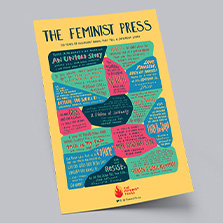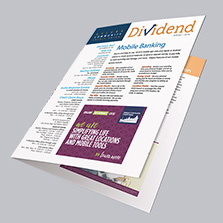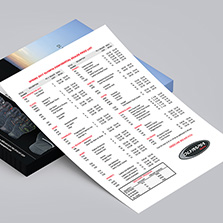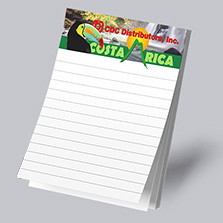
Behind the Print with Calico Spanish
In this episode of Behind the Print, we’re joined by Daniel Fischer, COO of Calico Spanish. With a passion for the language and cultures of Spanish speaking countries, Daniel shares how he uses print to create educational materials to make learning Spanish fun and easy for children and their parents.
Below, you’ll find the transcript of our conversation, edited for clarity to ensure easy reading. If you want the full, authentic experience, make sure to check out the video attached below.
Connor: Welcome back to another episode of Behind the Print Podcast, where we feature industry leaders and uncover the creative minds and their businesses within the world of professional printing. Our mission is to provide you with inspiring, actionable resources that elevate your business projects and accelerate your journey to excellence in profit and in print. In this episode of Behind the Print, we are joined by Daniel Fisher, COO of Calico Spanish. Calico Spanish is an elementary Spanish curriculum with the goal of teaching kids to speak real Spanish for life. Daniel walks us through his journey of running a family business and the importance of print-based learning in an increasingly digital world. Welcome to the podcast, Daniel.
Daniel: Thank you. I appreciate you having me.
Connor: We appreciate you joining us. If you are ready, let’s dive in. Tell me a little about yourself and what you do.
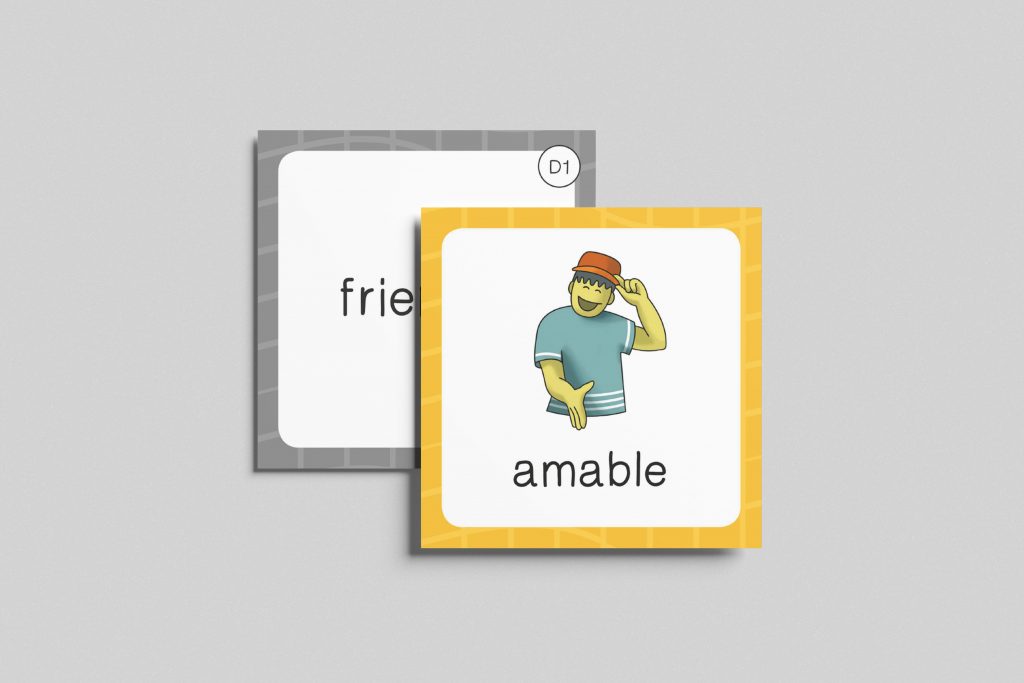
Daniel: I run the family business, Calico Spanish, as you mentioned. We are an elementary Spanish curriculum company that offers curriculum to homeschool families, public schools, and charter schools. Anyone learning elementary Spanish around the United States might be looking into our company for a curriculum that supports that learning. My mom started the company in 2008 because she felt there were not great Spanish resources for elementary learning, both to support teachers and to keep students engaged. Seventeen years later, here we are. The product has been evolving ever since.
Connor: I am curious, where did the name Calico come from?
Daniel: It came from the calico cat. Calico signifies something that can vary and change with the needs of the current environment. Calico Spanish felt like a fitting name for a curriculum company that needs to adapt constantly to a digital era and to the standards that guide elementary Spanish learning.
Connor: You touched on this briefly. You do a lot of work with homeschooling and public schooling. What can you tell me about your typical clients?
Daniel: It depends, because homeschool and public school are wildly different clients. A homeschool family is looking to educate their kids in Spanish, and most of the time the parents do not have a Spanish background. They are not fluent and have no idea where to start. They simply want to offer Spanish to their kids. For those clients, we offer ready-to-teach lesson plans with the goal of giving a parent or guide all the tools they need to teach. That includes pronunciation guides and native-speaker audio, so they are not worrying that their kids are learning from imperfect pronunciation. On the school side, we also have many schools that bring our curriculum to a third or fourth grade classroom where the teacher has no Spanish background. They want to offer Spanish but do not have the budget or resources to hire a dedicated Spanish teacher.
Connor: It sounds like the teacher and kids would be learning together.
Daniel: Exactly. That is a big component. The lesson plans are designed to give the parent or teacher everything they need to feel confident. Language is different from teaching math or science at the elementary level. Those subjects are more straightforward to teach. With a language, you are often learning it while you teach, so we provide the resources that make a teacher feel ready to deliver a lesson.
Connor: Would you expand on that? What problems do you typically help solve?
Daniel: In the public school space, two big issues are a lack of qualified educators and a lack of multimodal content. When I say a lack of qualified educators, it is not that the teachers are not good. They are fantastic. It is that they often lack support, or schools lack budget. For example, a recent study in 2023 showed many schools do not have funds or resources to hire a foreign language teacher. In those cases, a general education teacher is asked to incorporate Spanish once or twice a week. Our lesson plans, teacher guides, and sharable resources help that teacher bring Spanish into the classroom even without a certified Spanish teacher. On multimodal content, kids need multiple repetitions of the same words and phrases to make them stick, but hearing the same thing over and over can be boring. We make sure that repetition shows up across formats, like a video story, a comic book, or a song, so kids hear and use language in context and also get exposure to new words that will make sense later.
Connor: That ties into what I saw on your website about focusing on key elements and achievable pieces of language instead of long vocabulary lists and complex grammar explanations. Personally, I tried Rosetta Stone when I was younger and got frustrated after a few sessions. Can you tell me more about the Calico Spanish teaching process?
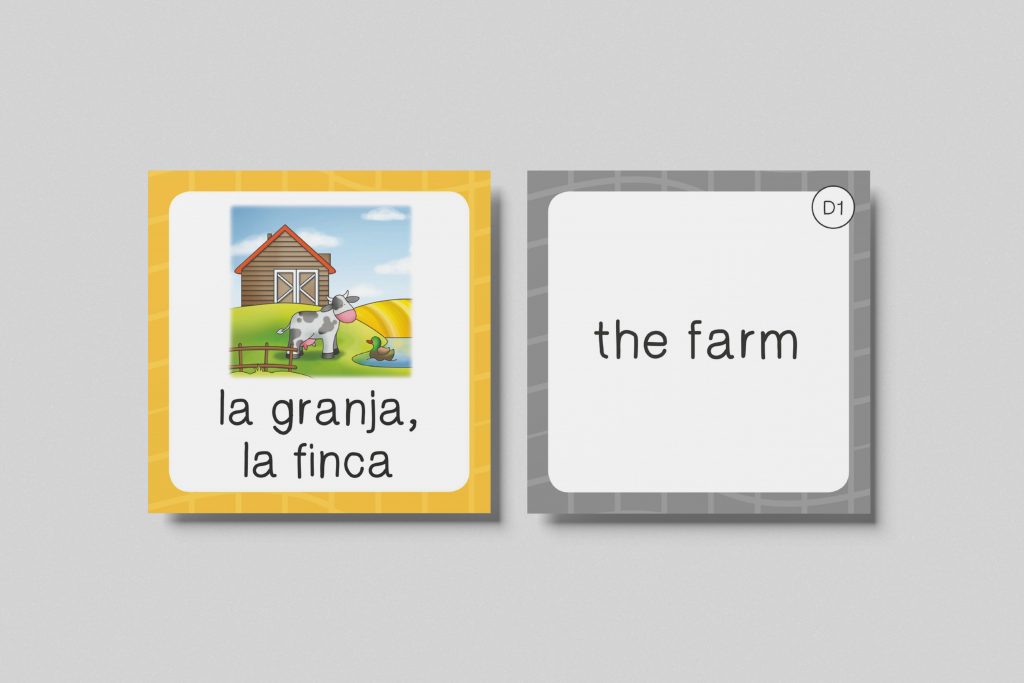
Daniel: Absolutely, and I can empathize with that experience. Learning strategies vary. I am a visual learner. Text alone is not enough to teach or engage me. Our curriculum team has done a fantastic job of acknowledging that you have to engage kids first. Until they are engaged, they are not learning. We use Calico characters, which you may have seen on our flashcards. They are fun, colorful, and have distinct personalities. They show up throughout the curriculum and take kids on journeys through Latin America. A typical lesson might start with a video story that introduces key words as characters interact. Then there is a whole-class activity, for example kindergarten students greeting classmates with hola and adios to get them speaking right away. We might then introduce a Calico comic focused on culture. Maybe the characters visit a football stadium or a supermarket. The focus is on cultural experiences, so kids learn the language and culture of Spanish-speaking countries.
Connor: Learning the cultural aspects probably helps put things into context and supports the process.
Daniel: Absolutely. Culture is a huge piece of the American Council on the Teaching of Foreign Languages framework that schools look to. Elementary Spanish and other world languages align to that framework. It emphasizes learning through context, culture, and connections with classmates and with the cultures of the target language.
Connor: That sounds comprehensive, but in a way that keeps kids engaged. When I was a kid, I had the attention span of a goldfish. Keeping that attention is important if you want kids to learn anything.
Daniel: Exactly.
Connor: How does Calico Spanish stand out from other businesses in your field?
Daniel: Any good curriculum will align with ACTFL standards, but there are many ways to meet a standard. We differentiate through engagement, with colorful characters, fun music videos, and songs we create in-house. We also provide comprehensive lesson plans and teacher resources. As we discussed, many schools struggle to hire a foreign language teacher, yet still offer Spanish. Our lesson plans, pronunciation guides, and teacher workbooks help teachers feel confident and prepared to teach.
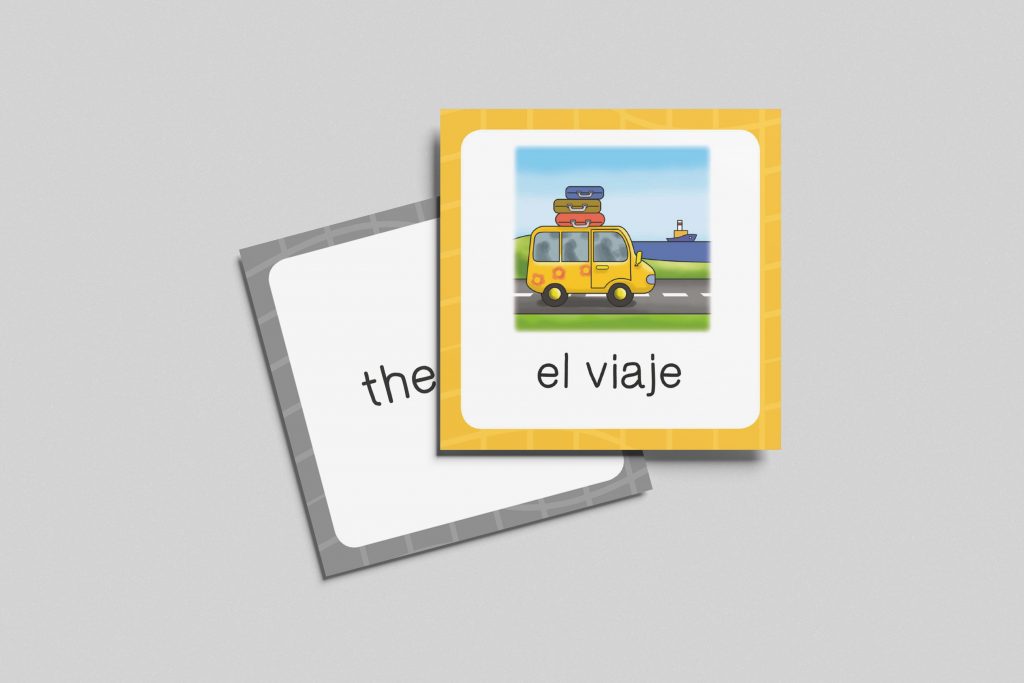
Connor: Tell me about how print has helped elevate your business.
Daniel: That is an interesting story. When we started in 2008, our curriculum was all print. We shipped boxes of print materials. That is how we were introduced to PrintingCenterUSA, which printed teacher guides, student workbooks, and comic books. Everything was print. Around 2016, many schools called for digital. They wanted kids on computers and a fully digital curriculum, so we moved in that direction. We still offer digital today, but COVID was a turning point. It highlighted issues with an all-digital world for young learners, and in recent years we have seen a revival in demand for print. We brought back print materials we had sunset and constantly hear from schools asking for resources in print because they want kids engaging with paper. From my personal learning experience, I learn better with print. Digital devices bring distractions and blue light. Having a U.S.-based printing partner that delivers quality, has strong customer service, and quick turnaround has been key for us, especially in education where it can be a hurry-up-and-wait situation. A district might send an RFP in March, then call in August needing workbooks and flashcards next week. Knowing we have a partner who can handle that keeps our schools and partners happy.
Connor: It is a pleasure to print with you. That is a great quote for the blog.
Daniel: Fantastic.
Connor: What major milestones or projects have defined Calico Spanish?
Daniel: The curriculum has changed to meet schools’ needs and the realities of digital learning. A key milestone was moving from an all-print product to a blended approach where kids have print workbooks or comic readers in front of them, while teachers can plan from their computers at home or in the break room. Understanding how to deliver a curriculum that can vary with a teacher’s day has been a big milestone.
Connor: Can you tell me about any challenges holding your business back right now?
Daniel: In our business it is a hurry-up-and-wait process. Homeschool orders come in year-round, but schools typically order during summer. Their fiscal year starts, they are on break, and they evaluate curriculum and rollout plans. We are very busy from April to October, then have downtime from November through March. That time is valuable for recovery, planning, and rolling out new features, but it is also difficult because school needs change constantly. You have to keep a finger on the pulse of where learning is heading so you can be ready. If you do not have the product a school wants by summer 2026, you might lose sales to a competitor who read the market better. That is another reason a U.S.-based printing partner matters. When we are designing new products, we need flexibility to source materials, prototype, and send samples to partner schools for testing quickly.

Connor: Different kind of question. If you had a day completely free to spend however you like, how would you spend it?
Daniel: This time of year, heading into fall, I would be in the mountains around Montana, enjoying the views, hearing migratory birds, and if I get lucky, hearing elk calling in the early morning. That would be my ideal morning. If I truly had a fully free day, I would sit back and read a book as well.
Connor: One last question. How can our listeners get in touch with you to learn more or collaborate?
Daniel: You can check out our website, calicospanish.com. We also have a YouTube channel called Calico Spanish for Kids. We have over one hundred thousand subscribers and over thirty million listening hours across our history. It is a great resource if you want to gauge your kids’ interest in Spanish. Put on a video and see how they react. Across our socials, you will find us under Calico Spanish.
Connor: Did you have any questions for me?
Daniel: No.
Connor: That is a wrap on another episode of Behind the Print. Thank you to our listeners for joining us as we explore the artistry and innovation of the printing world. Remember, having a strong vision, building the right strategy, and using tools like print to amplify your message will make your brand stand out from the crowd. If you enjoyed today’s episode, be sure to get your sample pack today from printingcenterusa.com and share it with your fellow business enthusiasts. Until next time, keep those creative sparks flying, and remember, there is always more to discover behind the print.




